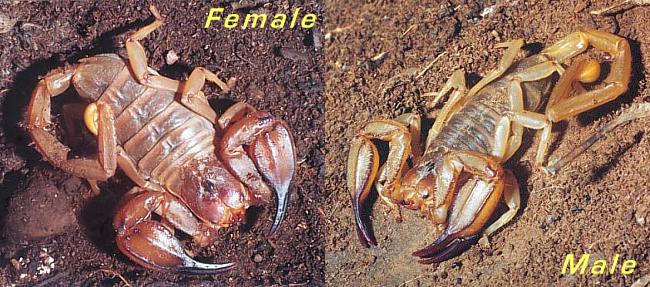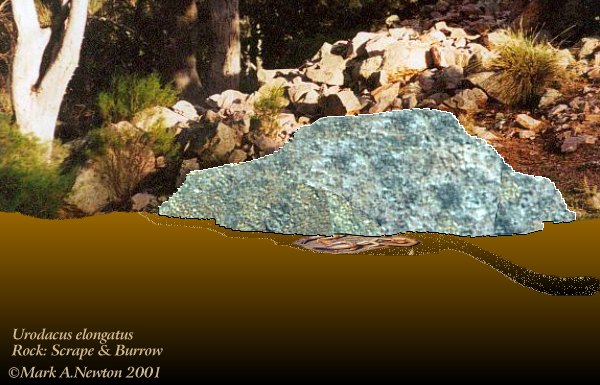|
- the Spiral Burrow Library -
Urodacus elongatus
This scorpion lives in gullies and hillsides within the Flinders Ranges of South Australia. Quite a large species of scorpion, I have seen males with a length in excess of 100mm from mouth to tip of sting. The females are generally a bit shorter although more robust. As with most species of Urodacus, mating and molting occurs in the early stages of the arriving warm weather and progeny are born in later summer, early autumn.
Competition against one another and other creatures for a rock is fierce. Not just any rock, but in particular large rocks are favoured by larger and adult individuals. Rock selection is not random with respect to size and is not random with respect to other characters also. Rocks that have a large portion buried underground are not used, and rocks that dont seal well with the surface are also avoided. A scrape is constructed under the rock as shown in the image above. At one end of the scrape usually distally to the entrance a short shallow burrow is constructed. During winter the scrape is frequently used with the subterranean burrow used during summer to avoid desiccation. The burrow is sealed off as temperatures rise to help maintain a stable microclimate. During this time the scorpion undergoes ecdysis(molting) if it's a pre-adult instar. The sealing of the burrow is absolutely critical during this vulnerable period as ecdysis requires a very tight control over humidity. Predators are also kept at bay during the molting and hardening of the new exoskeleton.
|


